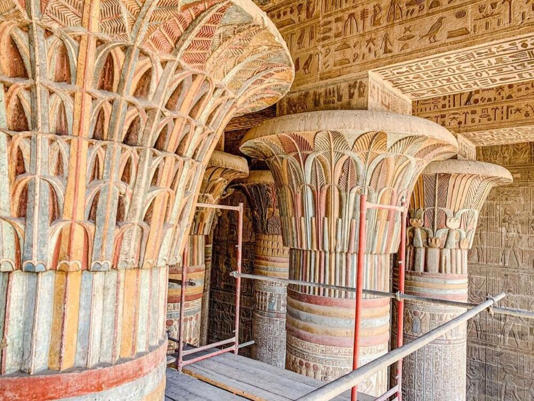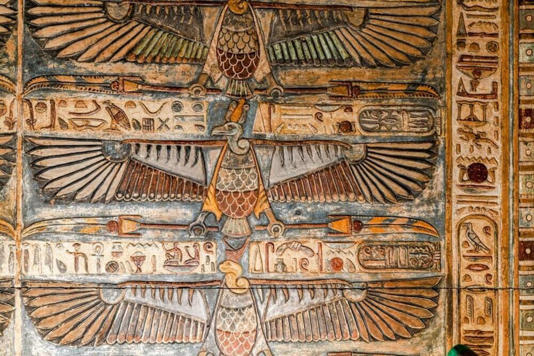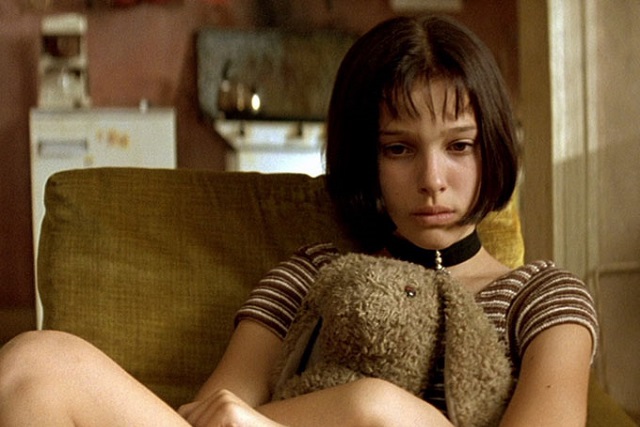
Archaeologists unveiled a series of spectacle ceiling paintings in an ancient temple in Egypt, the Temple of Khnum. The site is located in the city of Esna in Upper Egypt, about 55 km south of Luxor. The place is recognized as a World Heritage Site.
Prof. Christian Leitz of the University of Tübingen in Germany of the Institute for Ancient Near Eastern Studies said that the reliefs discovered in the central part of the ceiling make up a total of 46 depictions of the Egyptian eagle goddess Nekhbet. He was the goddess who defended the city of Nekhbet and then, when worship spread, became the goddess of Upper Egypt. The Egyptian cobra goddess Wadja, was the goddess of the city of Buto and later became the goddess of the papyrus, pharaohs, and all of lower Egypt.

The difference between the two is that Nehvat carries the head of an Egyptian eagle (the ancient Egyptians believed that these eagles were only females, not males). While the white crown of Upper Egypt, Wadja, carries the red crown of Lower Egypt with a figure the cobra.
Will you offer us a hand? Every gift, regardless of size, fuels our future.
Your critical contribution enables us to maintain our independence from shareholders or wealthy owners, allowing us to keep up reporting without bias. It means we can continue to make Jewish Business News available to everyone.
You can support us for as little as $1 via PayPal at office@jewishbusinessnews.com.
Thank you.
Researchers from the Institute for Ancient Near Eastern Studies at the University of Tübingen and the Egyptian Ministry of Tourism and Antiquities, headed by Dr. Hisham el-Leithy, have been working since 2018 to unearth the temple’s reliefs, paintings, and inscriptions and restore its original hues.

“Temples and ancient images of the gods were frequently painted with vibrant hues, but these hues have typically faded or vanished entirely due to external factors,” explains Leitz. Since over two thousand years ago, the colors of the Temple of Khnum at Esna have been protected by a layer of dirt and soot, which has served to preserve them.
The now-revealed splendor of the hue employed in portrayals of the “Two Ladies,” Nekhbet and Wadjet, was previously unknown to specialists. “From the 1950s, the French Egyptologist Serge Sauneron systematically documented the Temple of Khnum at Esna and the paintings that were visible at that time,” says Tübingen scientist Dr. Daniel von Recklinghausen, “The temple’s complete range of images is unique in its wealth of figures and the state of preservation of the colors.”
The pillars and crossbeams (architraves) with the inscriptions painted on the Isna Temple
More than half the ceilings and columns have been cleaned, preserved and now documented by the team led by Ahmad Imam. Also, the two architraves, which are entirely visible in front of the building, were cleaned.
“For the first time, we can see all the decorative elements with each other,” said Prof. Leitz. The Egyptologists are currently planning an annotation of all the paintings and studying the connections between the inscriptions on the walls, columns, ceiling, mythological topics, astronomical calculations, and dedications to the kings who built the temple.
The temple was one of the last temples of ancient Egypt and was built during the time of the Ptolemy in the second century BC. Over the years, more parts were added to the building, especially in the days of the Roman emperors, Claudius (first century AD) and Marcus Aurelius (second century AD), who left their mark on the building, each in their own time.




